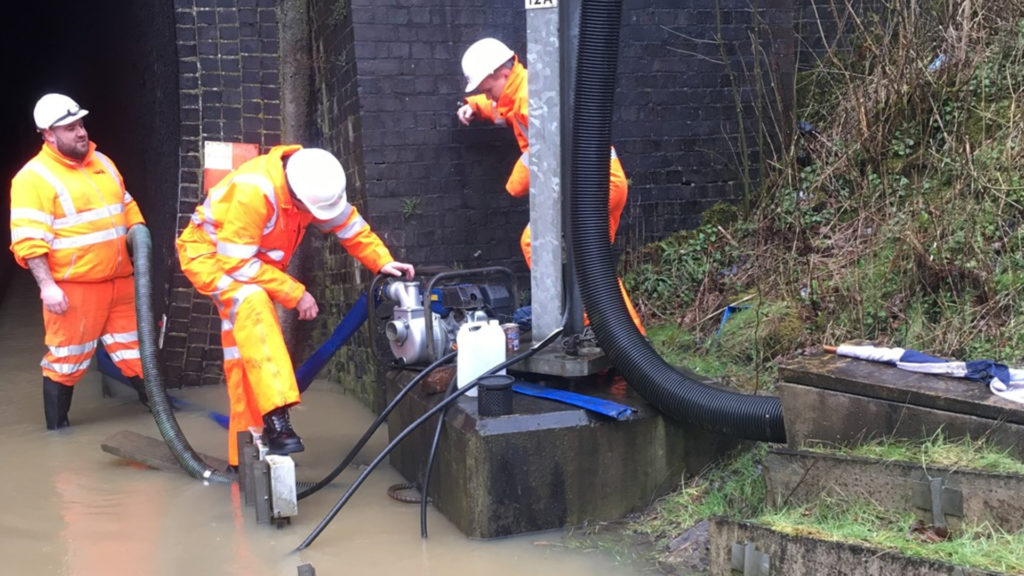Train journeys are being made more reliable on the West Coast main line thanks to major work to stop tracks inside a Victorian-built railway tunnel from flooding.
Network Rail engineers will improve drainage in Crick tunnel on the Northampton loop. This will reduce delays to one of Europe’s busiest mixed-use passenger and freight railway lines.
Because of its age, water leaks through the 140-year-old tunnel’s walls, causing tracks to flood and forcing trains to run at slower speeds.
Between 2012 and 2020, vital freight and tens of thousands of passengers travelling between London Euston and the Midlands were delayed by the tunnel flooding for a total of 15,000 minutes – that’s more than 10 days.
Video released today (Wednesday 10 March) shows how track workers used high volume pumps to clear rising water from tracks last December.
Now Network Rail has teamed up with train operators to solve the problem once and for all.
While passenger numbers are low during this latest period of national lockdown, a year’s worth of overnight weekend work is being condensed into five consecutive days between Monday 15 and Friday 19 March.
It’s thought to be the longest full closure of the tunnel since it opened in 1881. Doing the work in one go will save the taxpayer £7.5m*.

James Dean, Network Rail’s West Coast Mainline South route director, said: “This speedy upgrade of Crick tunnel shows how the rail industry is coming together to get the West Coast main line in the best possible shape for passengers when they can return once coronavirus travel restrictions are eased. This is all part of our commitment to build back better as the country emerges from the pandemic. However, as the line will need to close for the major upgrade, I’d urge anyone still making essential journeys to check National Rail Enquiries, so they know what to expect when they travel.”
Buses will replace trains to keep London Northwestern Railway passengers on the move between Rugby and Northampton.
Avanti West Coast trains will be diverted between Rugby and Milton Keynes with changes to the departure and arrival times at London Euston.
Gus Dunster, executive director of operations & safety for Avanti West Coast, said: “Working with industry partners we have amended our timetable between Monday 15 – Friday 19 March to facilitate Network Rail’s work at Crick Tunnel, while protecting our vital services for key workers. As a result, the departure and arrival times at London Euston have changed. If customers are making an essential journey during this time, we strongly recommend they check before they travel, plan their journey in advance and make a reservation.”
Lawrence Bowman, customer experience director for London Northwestern Railway, said: “I thank our passengers making essential journeys for their patience while Network Rail carries out these important improvements to the railway. I urge our customers to plan ahead and check their train times before setting out if they plan to travel during the work. Replacement buses will be in operation between Northampton, Long Buckby and Rugby for those who need them.”
Graham Preston, head of planning efficiency and innovation at DB Cargo, said: “This is a great example of industry collaboration to ensure we can keep vital goods moving in the UK in a timely manner. The past 12 months have proved that we can work in a more agile and responsive way for our customers and it’s great to see Network Rail supporting our needs and those of our customers as we build back better together. I look forward to seeing greater collaboration for freight with Network Rail in the future.”
Passengers making essential journeys are being advised to check www.nationalrail.co.uk for the latest travel information.
Photo credit: Network Rail


